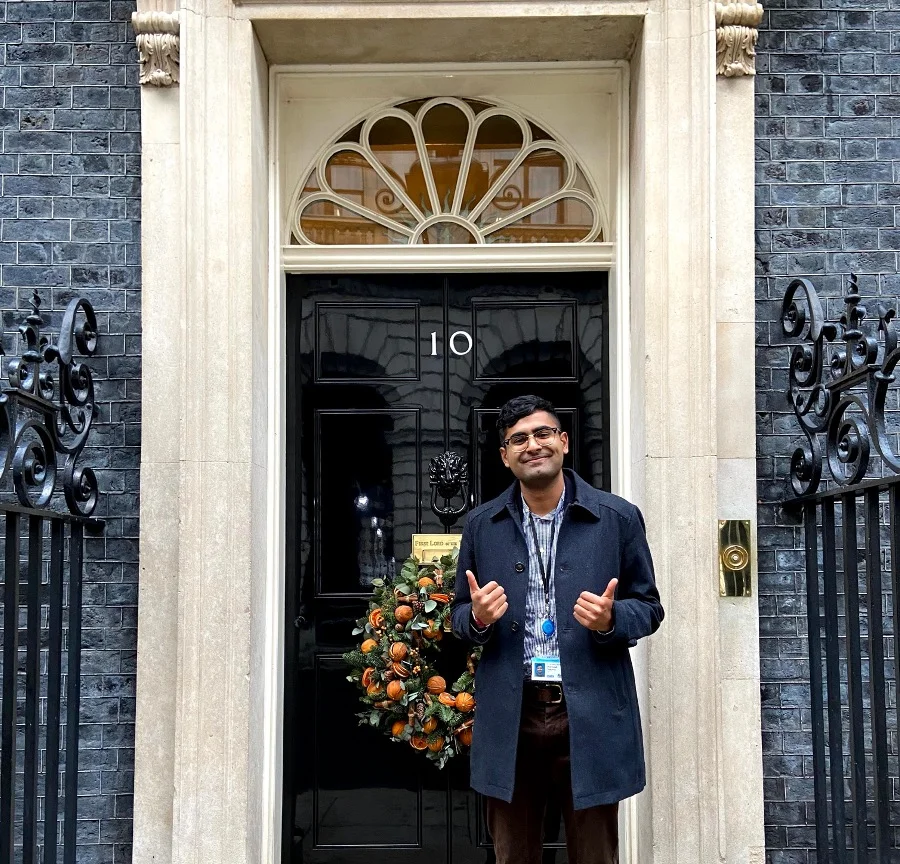Mind the Product is the world’s largest product community. In October 2023, they ran their flagship event, #mtpcon. This blog post covers my key takeaways from the event.
 Photo by Luis Quintero: https://www.pexels.com/photo/photo-of-people-gathering-in-room-2833037/Photo
Photo by Luis Quintero: https://www.pexels.com/photo/photo-of-people-gathering-in-room-2833037/Photo
For change to happen the conditions need to be right
Tim Harford, a Behavioral Economist, discussed how technology alone cannot make a difference without changes in organisations and society. Before, accountants were using paper to balance books because it was cheap to use. With the introduction of spreadsheets, it made accounting much easier. It doesn’t mean accounting became obsolete. Instead, it helped accounting specialise and focus on harder tasks.
Why is this important? By looking at the past, we can see that Generative AI doesn’t have to take all our jobs, but what it can do, is help focus on new things.
Scaling, 10x better product, being mission-driven and empowerment
My favourite talk was by Nilan Peiris, Chief Product Officer at Wise. He posed the question, can a product scale by word of mouth? Nilan talked through the Net Promotor Score (NPS).
 Image by SurveySparrow: https://surveysparrow.com/blog/net-promoter-score-calculation-guide/
Image by SurveySparrow: https://surveysparrow.com/blog/net-promoter-score-calculation-guide/
When someone moves from 5 to 6, they double the number of people who they tell. Likewise from 6 to 8, and 8 to 10. That’s a lot of people! You can grow your NPS by reading customer feedback. Customers want to see that the product is faster, cheaper and easier to use.
To get customers to care about the product, you need to be 10x better than anyone else. This is hard! Nilan talked about how it took 3-5 business days to send money. It took a lot of lobbying effort to bring this down. Now it’s almost instantaneous.
The most powerful moment of the talk was when Nilan shared Wise’s mission: ‘Money without borders - instant, convenient, transparent and eventually free’. Wise sent this mission statement to their customers via email without a call to action. This was their most successful marketing campaign. People shared the statement with others. It galvanised people and they became their biggest advocates.
Nilan believes one of the key things he can do as a Chief Product Officer is push for quality. Every 2 weeks, he ‘walks the product’ with his Product Managers (PM), and they discuss feedback and bugs. The PM will prioritise and demo again next quarter.
Nilan no longer uses the word ‘autonomy’, he prefers the word ‘empowerment’. By creating an empowered culture, people close to the ground can help to push the product into new spaces. Working in empowered teams comes with limits e.g., budgets, quality, strategy, and accountability. Nilan mentioned that customers don’t care about autonomy, they care about the speed at which we achieve the mission.
Generative AI and when to use it
Claire Woodcock, Director of Product, ML at Mozilla, discussed how to get Generative AI into your product. Of course, not every product warrants this. Claire came up with 5 steps to get Generative AI into your product.
-
Select your problem Is there somewhere in the product where there’s room for efficiency? Is it something you have control over?
-
Evaluate your data Do you have the data? How will you manage it?
-
Build or buy Do you have the skills? There is an AI skill shortage. What is the cost? Be careful of lock-in/spiralling costs.
-
Build a proof of concept Is the quality good enough? Have you tested this with users?
-
Scale to production Keep an eye on costs and be aware of model drift (when a model’s performance on new data is different from how it performed on the training data it was built on).
Working with designers
Jane Austin, Chief Product Officer, Juniver, talked about product managers working with designers. The part that struck me the most is the way not to give feedback to designers. I know that there are times when I say “I like it” or “make this bigger”. That isn’t a great way to give feedback. Make the feedback more specific to the outcome you would like to achieve. Here’s some good advice on offering feedback to designers.
Conclusion
All the talks were excellent:
- Marc Abraham, Product Director at Backbase talked about failing. It can feel like a dirty word. It doesn’t have to be as you can learn from your failure.
- Randy Silver, discussed the ‘Product Environment’ canvas. This tool helps improve your work environment.
- Keji Adedeji, Product Director at FT. Keji talked about dealing with challenges and how to overcome them. Find your tribe and support one another.
- Randeep Sidhu, Former CPO at Reliance Health used heroes and villains as a way to tell his story. During his talk, he emphasised three key points: avoid assuming you are always right, address the main sources of stress for your users and be willing to challenge the status quo.
I haven’t captured everything from #mtpcon. The fact I haven’t mentioned them is no reflection on the speakers. The talks I mentioned in my blog posts are the ones that resonated with me the most.
The #mtpcon event showed that it’s important to have a culture of learning. Embracing challenges and putting customers first is key to making successful product strategies in a changing market.

